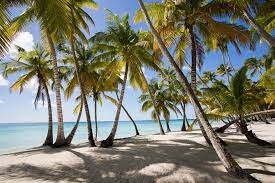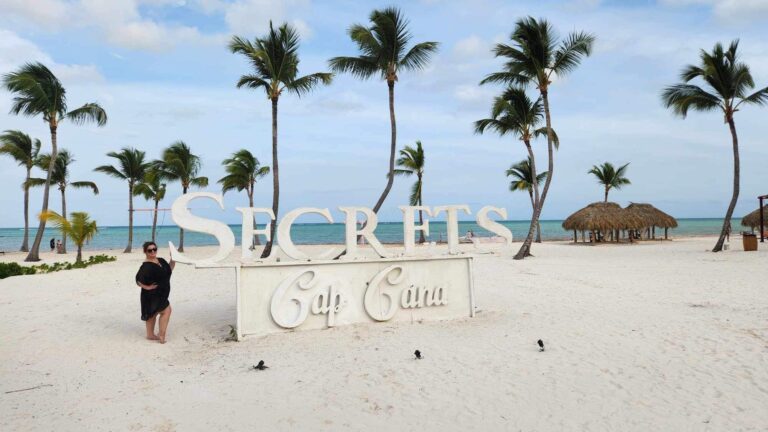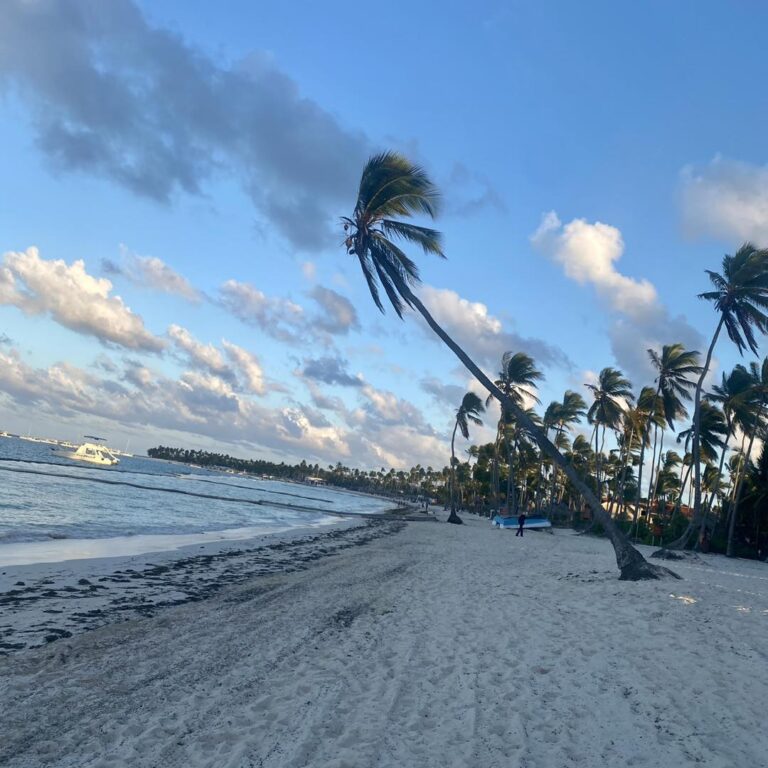
To describe Dominica to the king and queen of Spain, Christopher Columbus reportedly crumpled a piece of parchment into a ball: The folds and creases illustrated the island's steep mountains (and created one of the first documented three-dimensional maps).
But his model did little to communicate the island's other wonders: Hundreds of fast-running streams plunge through its thick tropical forests, and rare birds and animals flit through the greenery. Offshore, steep underwater cliffs play host to colorful coral, sponges and fish. Best of all, most of these attractions are in pristine condition. Even after recent attempts to increase the number of visitors to the island, Dominica (pronounced dom-in-EE-kah) is one of the most underdeveloped islands in the region. In fact, over the years, Dominicans have debated whether to return to the pre-Columbian, Kalinago name Waitukubuli, meaning "tall is her body."
The lack of the usual travel amenities—large resorts, museums, shopping, nightlife—means that travelers seeking a typical Caribbean getaway may want to steer clear of Dominica. But those who love nature and don't mind roughing it in tropical wilderness will find the island to be pure paradise. People go to Dominica to catch a glimpse of a rare bird, to spend the day hiking through dense forests, and to dive and snorkel in remarkably clear waters. It's little wonder that it has become one of the primary ecotourism destinations in the Caribbean.
Note: Dominica was devastated by Hurricane Maria in September 2017. Full recovery will take years, though much progress has already been made. Roads and bridges have reopened, but some of the more remote hiking paths are still closed. Travelers should investigate current conditions prior to planning a visit.
Geography
Dominica is a fairly small island, 15 mi/24 km wide by 29 mi/47 km long. Volcanic mountains rise abruptly to more than 4,500 ft/1,375 m and run north-south along the island's entire length. Lush oceanic rain forest covers the hillsides, and there are also evergreen forests, cloud forests, montane thickets and more—an incredible variety for so small an island.
Jagged ridges and cliffs dominate the 88-mi/148-km coastline, though some narrow beaches lie along the leeward (west) side of the island, many with black sand. (The island looks more like the Hawaiian Islands than its neighbors in the Caribbean.)
The island's abundant rainfall means there's plenty of water: Hundreds of streams and more than 300 rivers crisscross the island, waterfalls cascade down steep valleys, and lakes and hot springs splash across the interior.
History
It was a Sunday in 1493 when Columbus first saw Dominica, and the island's name is drawn from the word Domingo—Sunday or "the Lord's Day." Despite the 3-D map Columbus made of the island, Spain took little interest—partly because of the fierce Kalinago Indians who were living there. The French sent missionaries to Dominica in the 1630s, but they had little success in converting the Kalinago and soon fled the island.
In the 1660s, the French and English agreed that Dominica should be left alone, but French settlers began establishing plantations, and France took formal possession in the 1720s. Like many other Caribbean colonies, Dominica changed hands between the French and English as the two powers battled in the 1700s and 1800s. France ceded control in 1763, and the English maintained control after 1805 and developed the island's sugar plantations.
Dominica became an independent republic in 1978 and has weathered some political turmoil since—including two unsuccessful coups in the early 1980s, one involving mercenaries who had ties to the Ku Klux Klan. Nature was also rough on the young country: Hurricane David struck the island in 1979, killing 37 people and leaving approximately 80% of the population homeless. After the direct hit of Hurricane David, there were several near misses, all of which left marks of destruction on the Caribbean islands, including Dominica.
In more recent years Dominica has endured two deadly and very destructive natural disasters: Tropical Storm Erika in 2015 and Hurricane Maria in 2017. The first took the lives of more than 30 people, and the second killed 65. The winds during Hurricane Maria were the highest ever recorded in Dominica, clocking in at 160 mph/258 kph.
Erika caused damages of US$483 million—95 percent of Dominica’s annual GDP. The destruction caused by Maria was even worse, with the hurricane wiping out nearly two years of Dominica's economic output. Some 95 percent of the island's houses were destroyed or damaged.
Despite these obstacles, Dominica has always bounced back. It has extended and improved its road system and, since Maria, has built sturdier homes using new building codes. The island has been enhancing its tourism sector, with considerable success. Agriculture, especially bananas and coconuts, remains important to the island's economy, although falling banana prices and changes to world trade rules have caused hardship for many residents. Ecotourism, supported by cruise- ships, has become the island's primary industry.
Snapshot
Dominica's foremost attractions include beautiful lakes, rain forests, indigenous culture, unique flora and fauna, mountains, challenging hiking, scuba diving, snorkeling, bird-watching, black-sand beaches, hot sulphur springs, health and wellness retreats, and whale-watching.
Those who are comfortable with rugged surroundings and who have a deep interest in nature will love Dominica. Those who relish relaxed days on the beach, pina coladas, gourmet food and nightlife might want to look elsewhere. The comforts and amenities of a large Caribbean resort are harder to find in Dominica than on islands with more established tourism markets.
Several large hotel and resort developments are underway, and Dominica is likely to become a more mainstream vacation destination in the coming years. Those looking for a hidden gem would be better off visiting the island sooner rather than later.
Potpourri
Jean Rhys, author of Wide Sargasso Sea and other novels, was born in Roseau. Some of her books, including Wide Sargasso Sea, are set in Dominica and draw on memories of her island childhood.
The word canoe comes from canoua—the Kalinago word for their long, oceangoing boats.
Almost 200 species of birds have been recorded on Dominica, including the sisserou and the jaco, two species of Amazonian parrots that are only found there.
Mabrika is the Kalinago word for "welcome," and you will hear indigenous people say it to visitors and guests.
Despite the healthy wildlife population and the existence of an endemic species of boa constrictors, there are no poisonous snakes, insects or creatures of any sort on Dominica.
People live longer on Dominica than in many other countries in the world, and it has three times the average incidence of centenarians as do developed countries such as Great Britain and the U.S.
The country's former prime minister, Dame Mary Eugenia Charles, was the first female prime minister in the Caribbean and was in charge of the island for 15 years. She is definitely a local hero (ask almost any resident).
Location
Most cruise ships visiting the island berth in Roseau, Dominica's main city and port. The main cruise-ship berth is located on the town's Bay Front, just across from the Roseau Museum and the Old Market. You can easily walk from the jetty to all of the city's attractions, but you'll need transportation to reach the national parks and other sights on the island. A tourist office is located at the Old Market, across from the pier. Open Monday 8 am-5 pm and Tuesday-Friday 8 am-4 pm. Phone 767-448-2045.
When two cruise ships arrive on the same day, one will dock at Woodbridge Bay Deepwater Harbour, the commercial port north of Roseau. From there, either a shuttle bus or a 20-minute walk will take you into Roseau. Tourism staff and licensed tour operators meet arriving visitors at the port just as they do at the Bay Front.
The Cabrits Cruise Ship Berth, the only cruise-ship terminal in the Caribbean that's in a national park, is at the northwestern end of the island. Within walking distance of the berth are the semirestored ruins of the 18th-century Fort Shirley Garrison and numerous forest trails. Licensed operators are on hand at the berth to take visitors on island tours or simply to drop them at the nearby Purple Turtle Beach.
Shore Excursions
Excursions are likely to include island bus tours, short forest and waterfall hikes, snorkeling and scuba diving, whale- and dolphin-watching trips, bird-watching, visits to Kalinago villages, Creole cooking classes, tropical garden walks, and health and wellness activities such as hot sulphur spas, yoga and massage.
Island tours are a great way to get a feel for Dominica in a short space of time. Community tours are also interesting options. Tours of the Bellevue Chopin Organic Farm are conducted by real farmers who share a wealth of information about Dominica's natural produce and herbal medicines.
Creole cooking classes are often combined with community garden tours in the elevated villages of Eggleston and Giraudel, noted for their flowers.
Wotton Waven is a small village in the Roseau Valley that is noted for its natural hot springs. Visitors can enjoy a rejuvenating soak at its rustic hot spring spas.
Kalinago culture can be experienced by a trip to two villages. Kalinago Barana Aute is a model village that has traditional thatched buildings, canoe-building and cassava bread-making displays, as well as music and dance. Kalinago Touna Aute is a contemporary Kalinago village where visitors are welcomed into homes and gardens to see how Dominica's indigenous people live today.
The adventurous could opt for scuba diving in the Soufriere Scotts Head Marine Reserve, river tubing, kayaking, hiking to the Middleham Falls, or canyoning in the stunning TiTou Gorge, a Pirates of the Caribbean film location. Capt. Jack Sparrow fans may also enjoy a boat ride along the Indian River, another film location, which is also convenient for visitors on ships that berth at the Cabrits in the north.
Other interesting excursions in this area include walking and bird-watching on the Syndicate Nature Trail, an indigenous parrot habitat. Check with your travel agent for additional information.






































